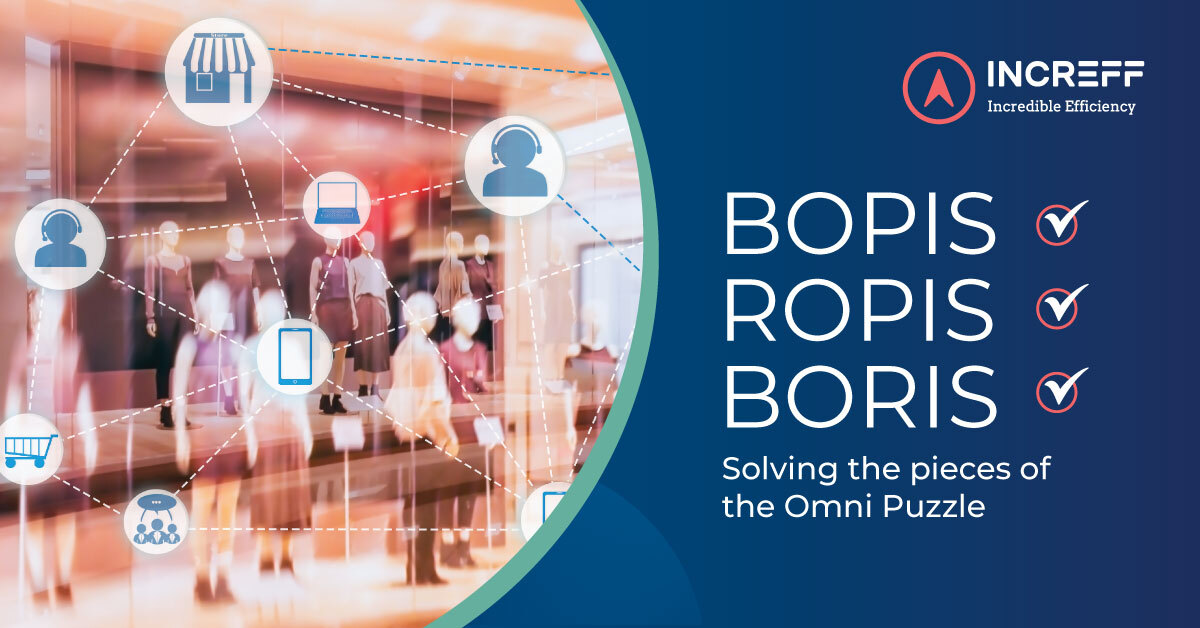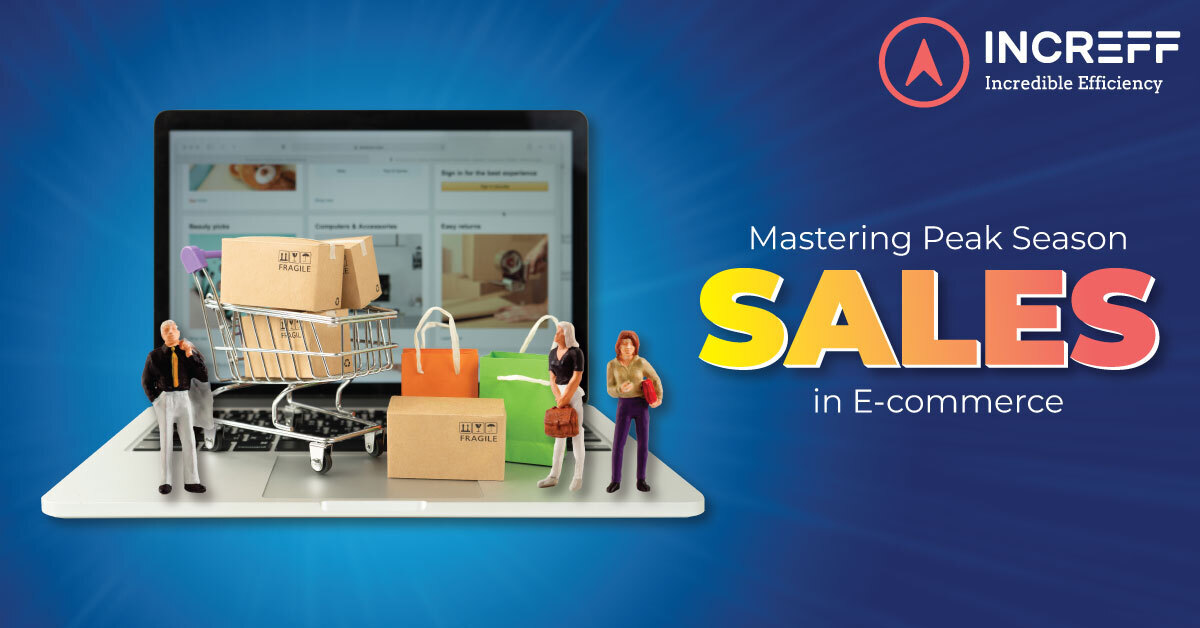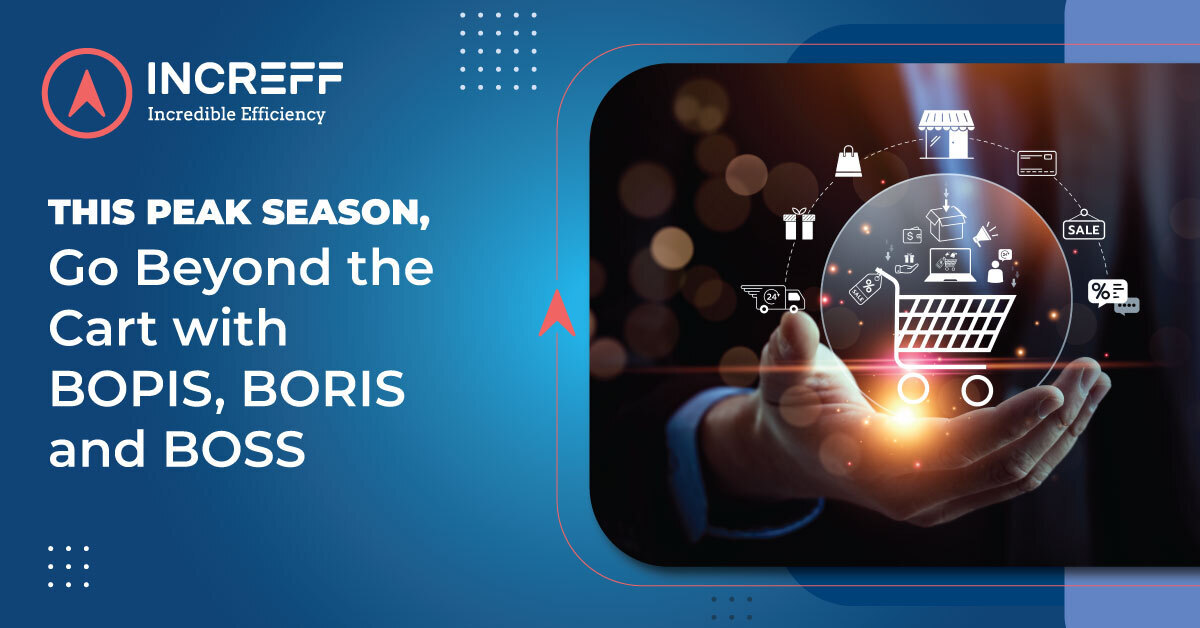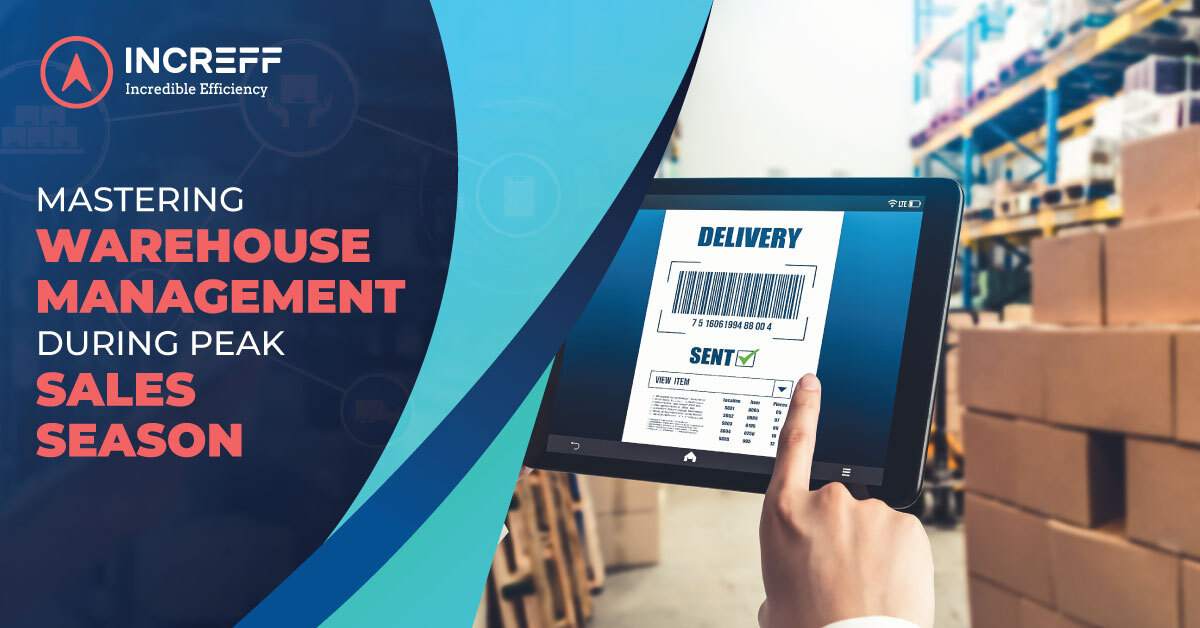
WWarehouse Management
BOPIS, ROPIS, and BORIS: Solving the pieces of the Omni Puzzle
In an era characterized by the increasing dominance of digital platforms, retail strategies have taken on new dimensions to meet evolving customer expectations. One of these is the rise of omnichannel retailing strategies, such as BOPIS (Buy Online, Pickup in Store), ROPIS (Reserve Online, Pickup in Store), and BORIS (Buy Online, Return in Store). These strategies are revolutionizing the way retailers operate, and consumers shop.
BOPIS combines the convenience of online shopping with the immediacy of brick-and-mortar stores, allowing customers to browse and buy online and then pick up their purchases in-store. Customers choose this when they are sure about the product they are buying.
ROPIS, on the other hand, provides the opportunity for customers to reserve their desired item online before heading to the store to finalize their purchase. This means the final decision of whether to buy the item or not happens in the store after trying or checking out the product.
Lastly, BORIS offers customers the option to return online purchases in-store, providing a quicker and more convenient way to process refunds or exchanges.
In this blog, we will explore these strategies in detail, delving into their importance and implementation in the fashion industry and how retailers can navigate the ‘omni puzzle’ by leveraging these models.
BOPIS (Buy Online, Pick Up In-Store)

BOPIS is a retail strategy that fuses the convenience of e-commerce with the immediacy of traditional shopping. In the realm of fashion retail, BOPIS allows customers to browse collections, make selections, and purchase items through an online platform. Once the online transaction is complete, customers can collect their purchases from a physical store at their convenience.
This omnichannel approach offers a swift shopping experience enabling consumers to shop at their leisure from anywhere, avoiding the hassle of in-store searching or waiting for a delivery. While from a business perspective, it eliminates the shipping cost, the benefit of which is also passed to the end consumer.
The BOPIS model also enables cross-selling as it increases the footfall in the stores which leads to more impulse buying. At the same time, it reduces returns because the customers come in to pick up the product, so if it doesn’t meet their expectations, they can immediately return it, which cuts down logistics and operational costs.
Data from FitSmallBusiness suggests that the BOPIS industry is going to grow at 19.7% annually, reaching $703.2 billion by 2027.
BOPIS is often confused with BOSS (Buy online, ship-to-store), which is technically a part of BOPIS. It involves the customer purchasing online and picking up their items from the store. However, in BOSS, the purchased items are out of stock and are shipped from the warehouse to the store after the customer completes the purchase.
Overall, both these models are game changer for retail businesses as it benefits both ends of the transaction. For businesses, it increases profitability, while for customers, it is convenient and enhances satisfaction.
Luxury department store chain Nordstrom, successfully implements BOPIS model
One of the early adopters of the BOPIS model was Nordstrom, an American luxury department store chain. The company promised that customers who order online can pick up their items in-store on the same day, often within just one hour of placing the order. For even greater convenience, they offer curbside pick-up, allowing customers to stay in their vehicles while a Nordstrom employee brings their purchase to them.
Nordstrom’s successful BOPIS implementation extends beyond just the customer-facing elements. They’ve also invested heavily in their inventory management systems to provide real-time inventory visibility across all their locations. This ensures that online customers always have an accurate view of what’s available, and store associates can quickly locate and prepare items for in-store pickup.
The result of this successful BOPIS implementation is reflected in their sales figures. The company has reported that customers who use the BOPIS service spend more and make more frequent purchases compared to other customers.
ROPIS (Reserve Online, Pick Up In-Store)

ROPIS allows customers to reserve items online before going to a physical store to finalize their purchase. It enables customers to browse and select items online from a brand’s entire catalog and ensure their chosen pieces will be waiting for them at the store.
This model gives customers the security and flexibility of online shopping and the instant gratification of walking out of a store with their purchase. Like BOPIS, ROPIS also leads to more in-store walk-ins, allowing brands to cross-sell products and increase their overall sales. It also eliminates delivery costs, saving brands a significant amount of money.
Another major advantage of ROPIS is that customers can try on clothes before purchasing them. Since there is no guesswork associated with sizing or the feel of fabrics, it leads to higher customer satisfaction and reduces return rates. It also makes it possible for brands to offer customers a more personalized shopping experience by preparing for their arrival in advance.
Global fast-fashion brand, Zara, introduces ROPIS service to customers
Recognizing the potential of blending the digital and physical shopping experience, Zara introduced its Reserve Online, Pick up In-Store service to customers. One distinctive feature of their ROPIS model is the quick turnaround time. In many cases, reserved items can be available for pick-up in-store within a few hours of the online reservation. This is possible due to Zara’s robust and responsive inventory management system.
Zara has also ensured that the pick-up process is seamless. Some stores have automated collection points where customers can collect their reserved items by scanning a QR code, saving time and enhancing the overall customer experience.
More importantly, Zara’s ROPIS strategy has helped increase foot traffic in their physical stores. Customers who come in to try on and pick up their reserved items often end up making additional purchases. This boosts sales, increases customer value, and encourages deeper engagement with the brand and its products.
BORIS (Buy Online, Return In-Store)

BORIS allows customers to purchase products online and make returns in-store. This service combines the convenience of online shopping with a physical store’s immediate, in-person service. So, in case of immediate need, customers can visit a store and return or replace their product.
This omnichannel strategy saves business logistics costs and increases customer satisfaction by offering a quicker and more convenient return process. It also allows retailers to offer superior customer service as the store staff can handle any issues directly and help customers find alternative products if a return is due to dissatisfaction with the original purchase.
BORIS is also great from an inventory management perspective. Returns that are processed in-store can be returned to inventory more quickly, reducing the amount of stock held in warehouses.
Apparel retailer Gap allows store returns for online purchases
Gap Inc. has long offered the BORIS option across its various brands. Customers can easily return online purchases to the right physical store locations. This approach simplifies the return process for customers, saving them the time and effort of repackaging the product and shipping it back. It also gives the company a chance to save a sale by offering exchanges or finding alternative products that suit the customers needs better.
The brand has found that offering BORIS has positive effects on sales. Customers returning products in-store often browse and make additional purchases. Therefore, this strategy improved the customer experience and helped in cross-selling, creating a win-win situation for both parties.
Major challenges brands face while implementing these omnichannel strategies
The omnichannel strategies discussed in this blog are essential for retail businesses to stay relevant and not fall behind the competition. However, it is not easy for brands to implement them. The biggest challenge is training the staff to handle these orders and process returns efficiently.
Brands also often lack the necessary technology to determine which inventory should be made available online. This leads to a situation where products not selling online remain stuck in physical stores while fast-selling items frequently experience stockouts and size cuts. Controlling the variety of products also becomes challenging, as brands cannot stock every item in their stores while exposing the entire inventory online.
Plus, the incentive for stores to prioritize online sales is also limited. Selling on online platforms from physical stores requires brands to bear the operating costs of the stores in addition to the sales channel margins. This combination often makes it economically unfeasible for brands to sell online directly from their stores.
Best practices for adopting BOPIS, ROPIS & BORIS in fashion retail
Considering the immense benefits of these omnichannel models, it is crucial that businesses start incorporating them into their retail operations. Here are some best practices that will you help you along the way.
1) Robust inventory management: It is crucial to have a real-time, accurate inventory management system. For this, businesses need a simple tool that can manage their inventory efficiently, like Increff O2O (Offline to Online). It will also allow customers to see what items are available at their local store when shopping online, preventing the problem of selling items online that are out of stock in the store.
2) Communication: Once an order is placed, keep the customer informed about when and where they can pick up their order by providing regular updates about their order status through email or text messages.
3) Designated pickup areas: Have specific areas in your store for BOPIS, ROPIS & BORIS. These areas should be clearly marked and easily accessible where customers can swiftly collect their items. If possible, consider curbside pickup options for even more convenience.
4) Speed and efficiency: One of the main attractions of these omnichannel models for customers is the promise of convenience and speed. Strive to have orders ready for pickup or process returns as quickly as possible and aim for a seamless and efficient process that enhances the customer experience.
5) Cross-selling and upselling: Use the in-store pickup opportunity to cross-sell or upsell additional items. Consider special in-store offers or personal shopping assistance to encourage further purchases during pickup.
6) Easy returns: It is crucial to provide an easy return process. Since customers are coming to the store to pick up items, make the return process possible in-store as well, which is essential for implementing BORIS.
7) Leverage data: It’s important to track and analyze data. Understand your customers, what they’re shopping online. This data can help improve your marketing strategies, enhance the customer experience, and cross-sell other products.
The Importance of Omnichannel Technology
Research by ThinkWithGoogle shows that omnichannel strategies drive an 80% higher rate of in-store visits. This shows that an effective omnichannel strategy is no longer optional but a necessity in the fashion industry.
It ensures that customers receive a consistent brand experience, whether they’re shopping online or in a brick-and-mortar store. This consistency builds brand loyalty and enhances customer satisfaction.
From a retailer’s perspective, it enables them to collect and analyze data across various touchpoints, providing insights into customers’ shopping habits and preferences. Hence, businesses find it easy to offer personalized shopping experiences, enhance customer engagement, and increase sales.
At the same time, it allows them to maintain accurate inventory records across multiple locations and platforms. This can reduce overstock and stockouts, improving operational efficiency and customer satisfaction.
If your business wants to adopt these strategies, the first step would be to have real-time inventory management and a single view of all your stock. This will ensure that customers can view and order your products seamlessly, and out-of-stock products never show up for sale. Increff O2O (Offline to Online) solution allows you to do this by bringing your stores online and exposing 100% of your inventory in all marketplaces.
All you now need to do is give customers the option to either buy/reserve their product online and pick it up from the stores instead of shipping it to them. If the product is in the warehouse, then the sale will count under the BOSS (Buy Online ship-to-store) model, and if it is already in the store, then it will fall under BOPIS or ROPIS.
Finally, to implement BORIS, you need to start processing returns at your stores. This will allow for faster processing and speed up the process of making the returned inventory online. Increff O2O solution can also assist you in the same with additional tools and features like quality checks during return processing, 100% traceability, and optimization of resale value.

16 June, 2023
RRegional Utilization
Riding the E-commerce Wave: Prepping for Peak Season…
The holiday season is the busiest time of the year for e-commerce brands. With the…
30 October, 2023
6 months agoWWarehouse Management
A more fulfilling season with retail’s dynamic trio:…
The festive sales season always brings a whirlwind of activity, and in the midst of…
27 October, 2023
6 months agoWWarehouse Management
How to Streamline Your Warehouse Operations During Peak…
The holiday season is here, and we all know what that means—sales and discounts! Both…
25 October, 2023
6 months ago



